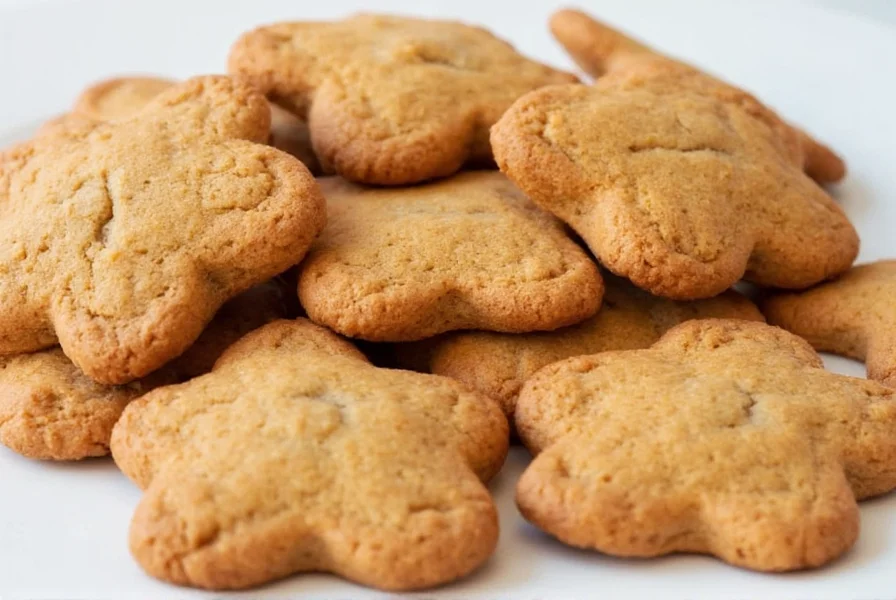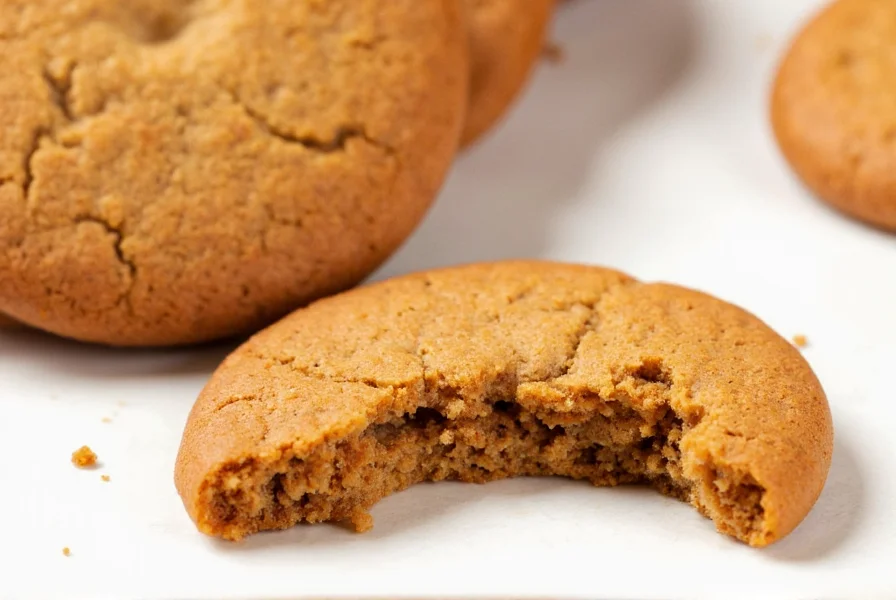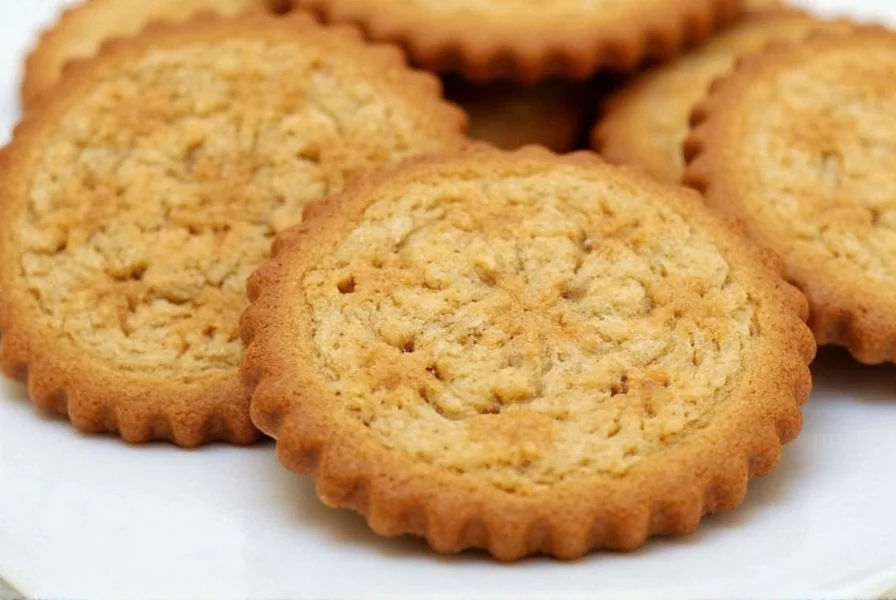Ginger snaps, known for their distinctive crackled surface and spicy-sweet flavor profile, represent one of the most enduring cookie traditions in baking history. These crisp cookies stand apart from their softer gingerbread cousins through specific ingredient ratios and baking methods that create their signature texture. Understanding what makes a true ginger snap requires examining both historical context and precise baking science.
The Historical Journey of Ginger Snaps
Ginger's use in baking traces back to ancient Asian and Middle Eastern culinary traditions, but ginger snaps as we recognize them today emerged in 19th century Europe, particularly in Germany and the Netherlands. The Dutch "peperkoek" and German "Pfeffernüsse" provided early templates for these spicy biscuits. American settlers adapted these recipes, with the term "ginger snap" first appearing in American cookbooks around 1890. The name likely derives from the audible "snap" when breaking the crisp cookie.
What Truly Defines Ginger Snaps
Several key characteristics distinguish authentic ginger snaps from other ginger-flavored cookies:
| Characteristic | Ginger Snaps | Soft Gingerbread Cookies |
|---|---|---|
| Texture | Crisp with firm snap | Soft and chewy |
| Molasses Content | Moderate (1/4-1/2 cup) | Higher (1/2-1 cup) |
| Sugar Type | Granulated white sugar dominant | Brown sugar dominant |
| Baking Temperature | Higher (350-375°F) | Lower (325-350°F) |
| Surface Appearance | Cracked "snap" pattern | Smooth or minimally cracked |
The Science Behind the Signature Snap
The distinctive cracking surface that gives ginger snaps their name results from precise baking chemistry. When chilled dough balls hit a hot oven, the exterior sets quickly while the interior continues to expand, creating tension that fractures the surface. Key factors contributing to this effect include:
- Chilled dough - Cold dough maintains shape longer before spreading
- Higher sugar content - Creates brittle structure as it caramelizes
- Specific spice ratios - Ginger and other spices affect dough elasticity
- Controlled moisture - Less liquid ingredients than soft gingerbread
Professional bakers note that the ideal ginger snap should break cleanly with moderate pressure, producing that characteristic audible snap rather than crumbling or bending.
Traditional Ingredients and Their Roles
Authentic ginger snaps rely on a precise balance of ingredients where each component serves a specific purpose:
- Ground ginger (2-3 tablespoons) - Provides the dominant spicy warmth
- Molasses (1/4-1/2 cup) - Contributes deep flavor and moderate moisture
- White granulated sugar (1 cup) - Creates crisp texture through caramelization
- Cinnamon and cloves (1-2 tsp each) - Complementary warming spices
- Cold butter (1/2 cup) - Creates flakiness when properly incorporated
- Baking soda (1/2 tsp) - Reacts with molasses acids for controlled rise
The ratio of dry to wet ingredients proves critical—too much molasses creates a chewy cookie, while insufficient ginger fails to deliver the characteristic bite that defines authentic ginger snaps cookies.
Global Variations of Ginger Snaps
While American ginger snaps typically feature a balanced spice profile with prominent ginger, regional variations showcase cultural adaptations:
- Dutch kruidkoek - Features additional cardamom and anise
- German Lebkuchen - Often includes nuts and citrus zest
- Scandinavian pebernødder - Smaller, harder versions with pepper notes
- British ginger nuts - Extremely hard biscuits designed for dunking
These international variations demonstrate how the basic ginger snap concept adapts to local tastes while maintaining the essential crisp texture and spicy profile that defines the category.
Identifying Authentic Ginger Snaps
When evaluating whether cookies qualify as true ginger snaps, consider these markers:
- They should break cleanly with moderate pressure, producing an audible snap
- The surface displays a characteristic cracked pattern from oven spring
- Ginger flavor dominates but balances with supporting spices
- They maintain crispness for days without becoming stale
- They lack the chewiness associated with gingerbread cookies
Many commercial products labeled as "ginger snaps" actually produce softer cookies that better qualify as gingerbread. True traditional ginger snaps cookies remain crisp throughout their shelf life, making them ideal for shipping and storage—a quality that contributed to their historical popularity.

Perfecting Your Ginger Snaps Technique
Home bakers seeking authentic results should focus on these technical elements:
- Chill dough for at least 2 hours before baking to control spread
- Use a cookie scoop for uniform size and even baking
- Bake on parchment paper at 350°F for 10-12 minutes
- Allow cookies to rest on baking sheet for 2 minutes before transferring
- Store in airtight container with parchment between layers
The ideal baking time represents a narrow window—underbaked cookies lack the proper snap, while overbaked versions become too brittle. Experienced bakers watch for the edges to darken slightly while the centers remain pale, knowing the cookies will continue cooking on the residual heat of the baking sheet.

Conclusion: The Enduring Appeal of Ginger Snaps
Ginger snaps cookies maintain their popularity through a perfect balance of spice, sweetness, and texture that few other cookies achieve. Their historical significance, distinctive cracking appearance, and satisfying crispness make them a holiday baking staple that transcends seasonal trends. Understanding what defines authentic ginger snaps—the specific ingredient ratios, baking techniques, and textural characteristics—helps both bakers and consumers appreciate this classic cookie in its true form, separate from softer gingerbread variations that often share shelf space but deliver a fundamentally different experience.
What's the difference between ginger snaps and gingerbread cookies?
Ginger snaps maintain a crisp texture that snaps when broken due to higher white sugar content and lower moisture, while gingerbread cookies use more molasses and brown sugar, resulting in a soft, chewy texture. Ginger snaps also develop a characteristic cracked surface during baking that gingerbread cookies typically lack.
Why don't my ginger snaps crack properly when baking?
Improper cracking usually results from dough temperature issues or ingredient ratios. For proper cracking, ensure your dough is thoroughly chilled before baking, use the correct sugar-to-fat ratio, and bake at the proper temperature (350-375°F). The rapid oven spring from cold dough hitting hot air creates the tension that forms the characteristic cracks.
How can I keep ginger snaps crisp for longer?
Store ginger snaps in an airtight container with parchment paper between layers. Including a silica gel packet can help absorb excess moisture. Unlike soft cookies, ginger snaps actually improve in texture after 24-48 hours as the spices meld and moisture fully evaporates from the cookie structure.
What makes ginger snaps different from speculaas?
While both are spiced biscuits, speculaas (Dutch windmill cookies) typically contain additional spices like cardamom and white pepper, feature intricate molded designs, and have a harder, more brittle texture than traditional ginger snaps. Speculaas also often includes almond flour, giving it a distinctive flavor profile.
Can I make soft ginger snaps instead of crisp ones?
Yes, by adjusting the recipe: increase molasses to 3/4 cup, replace half the white sugar with brown sugar, reduce baking time by 2-3 minutes, and store in a container with a slice of apple to maintain moisture. These modifications create what some call "chewy ginger snaps" though traditionalists would classify these as gingerbread cookies.











 浙公网安备
33010002000092号
浙公网安备
33010002000092号 浙B2-20120091-4
浙B2-20120091-4